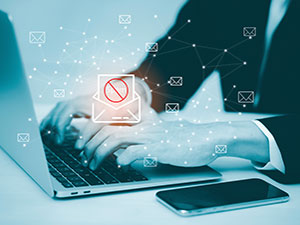
Tax season is a hacker’s dream.
W-2s are getting emailed. 401(k) reports are being dumped onto desktops. And all that work you did to lock down security? Gone.
Your clients don’t mean to expose sensitive data, but let’s be real—they will. The only question is: Are you going to let it happen?
Here’s the Problem
Your clients’ employees don’t think like security pros.
They don’t realize that email is the digital equivalent of a postcard—everyone along the way can read it. They don’t know that downloading financial reports to an unprotected laptop is like leaving the company’s tax returns in a coffee shop.
And when something inevitably goes wrong? Guess who they blame? You.
Here’s the Fix
Instead of playing cleanup after a data breach, stop it before it starts.
The best way to do that? Microsoft Purview.
With Microsoft Purview’s sensitivity labels, you can make sure that even when users download sensitive data, it doesn’t get sent out by mistake. Files get tagged, classified, and automatically protected.
So even if an employee accidentally emails the entire payroll file, Purview stops it cold.
What You Need to Do
- Educate your clients. Show them how tax season is a prime time for data leaks. (Because they don’t think about this stuff until it’s too late.)
- Introduce them to Microsoft Purview. Train them on sensitivity labels and data loss prevention (DLP). Make sure they understand that security isn’t just firewalls and antivirus—it’s about controlling the flow of sensitive information. Remember this is project work and should be quoted and billed as such.
- Take action now. This isn’t a “maybe later” situation. You already know your clients’ teams are about to screw this up. Get ahead of it.
Want to know how to set up Microsoft Purview for your clients? Check this SecOps session for a deep dive into implementation.
Because once that W-2 is emailed out, it’s too late. Fix it now.


